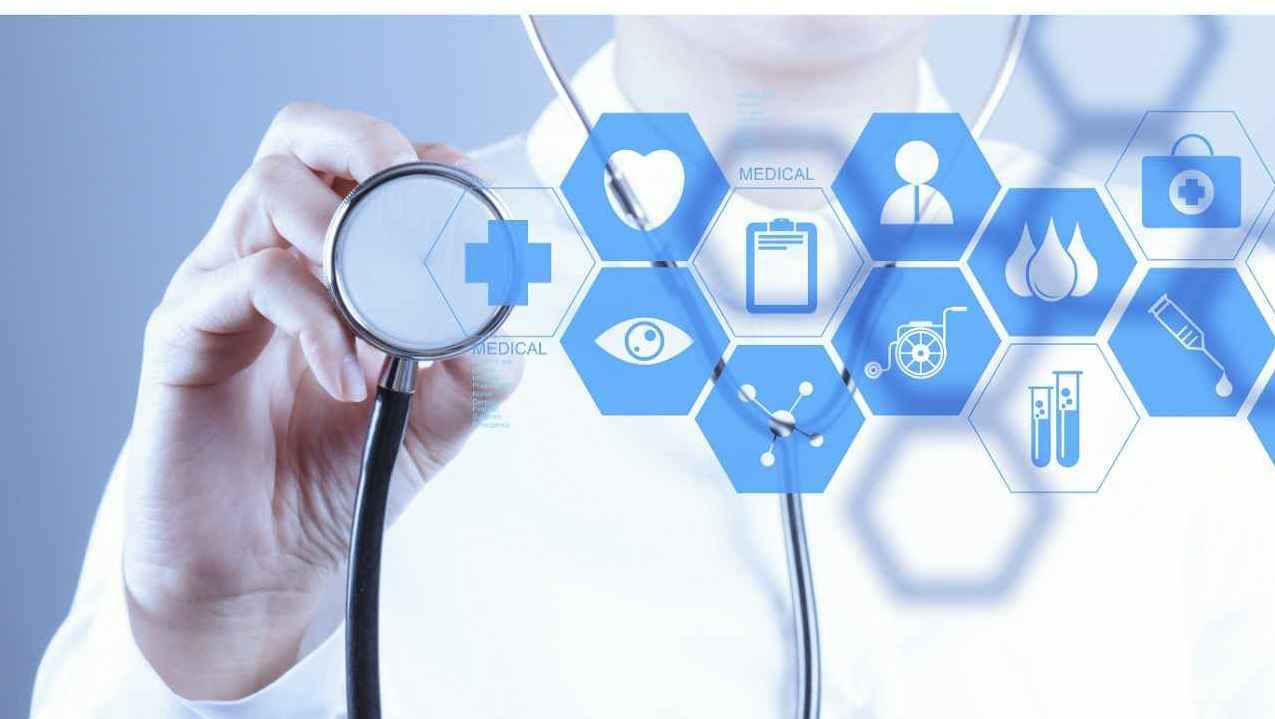The world of healthcare is changing faster than you can say “stethoscope,” and October 2025 is no exception. Two major players are stealing the spotlight: AI diagnostics and telehealth. These aren’t just buzzwords; they’re reshaping how we think about doctor visits, diagnoses, and even that awkward moment when you Google your symptoms at 2 a.m. (Spoiler: It’s not always cancer.) Let’s dive into these exciting trends, sprinkle in some humor, and explore how they’re making healthcare more accessible, accurate, and—dare I say—fun.
AI Diagnostics: Your Doctor’s New Brainy Sidekick
Imagine a world where your doctor has a super-smart assistant who never forgets a medical journal article, doesn’t get cranky after a long shift, and can spot patterns in your health data faster than you can binge-watch a Netflix series. That’s AI diagnostics in a nutshell. Artificial intelligence is stepping into the exam room, and it’s not here to steal the show—it’s here to make doctors look like superheroes.
How AI Diagnostics Works
AI diagnostics uses algorithms and machine learning to analyze medical data, from X-rays to blood tests to that weird rash you’ve been ignoring. These systems are trained on massive datasets—think millions of patient records, images, and test results—to identify patterns that might slip past even the sharpest human eyes. For example, AI can detect early signs of diseases like cancer, diabetes, or heart conditions by analyzing imaging scans or lab results with pinpoint accuracy.
In October 2025, AI diagnostics is making waves in specialties like radiology, pathology, and cardiology. Take IBM Watson Health, for instance. This AI powerhouse can analyze medical images and suggest potential diagnoses, helping radiologists catch abnormalities faster than you can say, “Is that a tumor or just a bad angle?” Studies from places like Stanford Medicine show AI can match or even outperform human experts in spotting certain conditions, like skin cancer from dermatology images.
Why It’s a Game-Changer
AI diagnostics isn’t just about speed; it’s about precision. It’s like having a medical detective who never sleeps. For example, AI can predict heart attack risks by analyzing subtle changes in ECGs that might look normal to a human. It’s also a lifesaver in rural areas or understaffed hospitals, where specialists are as rare as a good Wi-Fi signal at a campsite. By flagging potential issues early, AI helps doctors prioritize patients who need urgent care, saving lives and reducing wait times.
But let’s not get too serious—AI isn’t perfect. Sometimes it’s like that overly enthusiastic intern who flags everything as a problem. “Oh, you sneezed? Let’s schedule a full-body MRI!” That’s why human oversight is still crucial. Doctors and AI work together like peanut butter and jelly—deliciously effective, but only when paired correctly.
Real-World Impact in October 2025
This month, hospitals are rolling out AI tools to streamline workflows. For instance, AI-powered triage systems are being used in emergency rooms to assess patients’ symptoms faster than a nurse with a clipboard. These systems analyze vital signs, medical history, and even voice patterns (yes, your cough could spill the beans) to prioritize cases. Meanwhile, startups are launching AI apps that let you snap a photo of a mole and get a risk assessment in seconds. It’s like having a dermatologist in your pocket—minus the awkward small talk about your vacation plans.
Telehealth: Doctor Visits Without the Waiting Room Magazines
If AI diagnostics is the brainy sidekick, telehealth is the cool cousin who shows up with a laptop and a can-do attitude. Telehealth lets you see a doctor from the comfort of your couch, no traffic jams or germy waiting rooms required. In October 2025, telehealth is booming, and it’s not just for sniffles and sprains anymore.
What’s Driving the Telehealth Boom?
Telehealth has been around for a while, but the pandemic gave it a turbo boost. Now, it’s as common as ordering pizza online. Platforms like Teladoc and Amwell are making it easy to connect with doctors via video calls, phone chats, or even text. Whether you need a prescription refill, a therapy session, or advice on that mystery rash (seriously, stop Googling it), telehealth has you covered.
This October, telehealth is expanding into new areas like mental health, chronic disease management, and even physical therapy. Imagine doing guided exercises with a therapist over Zoom while your cat judges you from the couch. It’s convenient, and it’s cutting down on missed appointments—because who has time to drive across town when you’re juggling work, kids, and a Netflix queue?
The Perks of Virtual Care
Telehealth’s biggest win is accessibility. It’s a godsend for people in rural areas, busy parents, or anyone who’d rather not sit next to a coughing stranger in a waiting room. It’s also a budget-saver—virtual visits are often cheaper than in-person ones, and you don’t have to bribe your toddler with snacks to behave during the appointment.
But the real magic? Telehealth is breaking down barriers. Patients with mobility issues or chronic illnesses can get care without leaving home. Mental health services are thriving, too, with therapists offering sessions via secure apps. In fact, a 2025 report from the American Medical Association says telehealth has increased access to mental health care by 30% in the past year. That’s huge for people who might otherwise avoid therapy due to stigma or logistics.
The Funny Side of Telehealth
Of course, telehealth isn’t without its quirks. Ever tried explaining your symptoms while your dog barks at the mailman or your kid photobombs your video call with a toy dinosaur? And let’s not forget the classic “You’re on mute, Doctor!” moment. But these hiccups are worth it when you can get a diagnosis without leaving your pajama kingdom. Just don’t wear your bunny slippers to an in-person visit—they don’t have the same charm on Zoom.
How AI and Telehealth Are Teaming Up
Here’s where things get really exciting: AI and telehealth are joining forces like a medical Avengers team. AI-powered telehealth platforms are popping up, combining virtual visits with smart diagnostics. For example, during a telehealth call, AI can analyze your symptoms in real-time, suggest questions for the doctor to ask, or even recommend tests based on your medical history. It’s like having a crystal ball, but instead of predicting your love life, it predicts your cholesterol levels.
In October 2025, companies are testing AI chatbots that act as virtual triage nurses. These bots ask you questions like, “Is your headache more like a marching band or a dull thud?” and use your answers to decide if you need a doctor or just a nap. This saves time for both patients and providers, letting doctors focus on complex cases instead of fielding calls about minor ailments.
Challenges and Concerns
Nothing’s perfect, not even AI and telehealth. Privacy is a big concern—nobody wants their medical data floating around the internet like a viral cat video. That’s why companies are investing in top-notch encryption and compliance with laws like HIPAA. Another issue is the digital divide. Not everyone has high-speed internet or a smartphone, which can limit access to telehealth, especially in underserved communities.
AI diagnostics also has its hurdles. Overreliance on AI could lead to missed diagnoses if doctors lean too heavily on algorithms. And let’s be honest—AI doesn’t have the bedside manner of a seasoned physician. You can’t program empathy (yet). Plus, there’s the risk of “alert fatigue,” where doctors get overwhelmed by AI’s constant pings about potential issues. It’s like having a smoke detector that goes off every time you toast bread.
The Future Is Bright (and a Little Funny)
Looking ahead, AI diagnostics and telehealth are only going to get bigger. By next October, we might see AI predicting diseases before you even feel sick, like a medical fortune-teller. Telehealth could expand to include virtual reality checkups—imagine your doctor “walking” around your 3D avatar to check your vitals. Sounds like sci-fi, but so did video calls 20 years ago.
For now, these trends are making healthcare more human, not less. They’re giving doctors tools to work smarter and patients the freedom to get care on their terms. So, the next time you’re tempted to Google “why is my toe purple,” skip the panic spiral and try a telehealth visit with an AI assist. Your toe (and your sanity) will thank you.
And if all else fails, just remember: The only thing worse than a telehealth glitch is trying to explain to your doctor why you thought “essential oils” could cure a broken foot. Stay healthy, folks!






